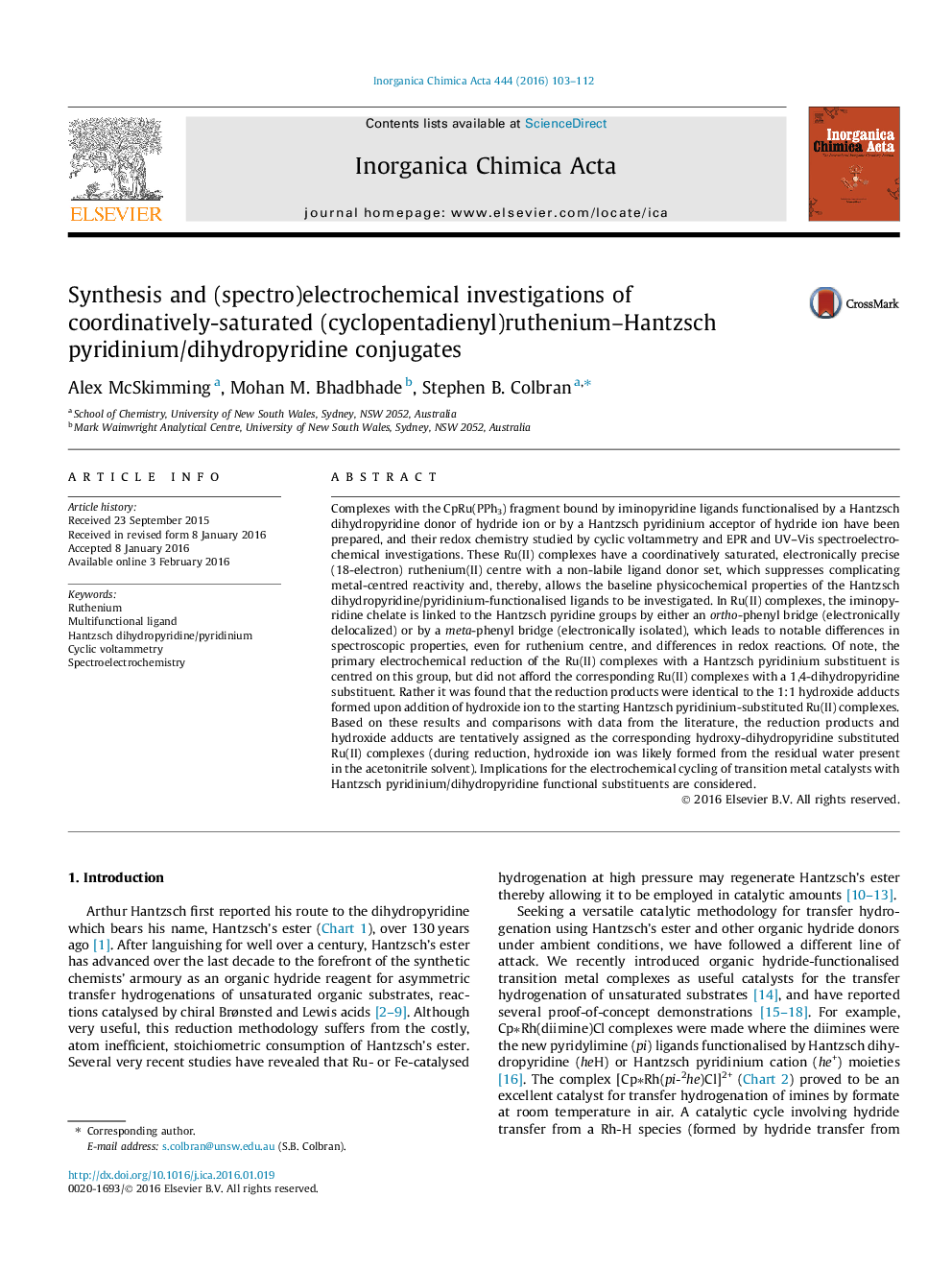| کد مقاله | کد نشریه | سال انتشار | مقاله انگلیسی | نسخه تمام متن |
|---|---|---|---|---|
| 1312010 | 1499145 | 2016 | 10 صفحه PDF | دانلود رایگان |
• Ruthenium complexes with tethered Hantzsch pyridinium/dihydropyridine centres are reported.
• Inter-centre electronic communication has a significant effect on physicochemical properties.
• Electrochemical regeneration of the dihydropyridine donor is studied.
Complexes with the CpRu(PPh3) fragment bound by iminopyridine ligands functionalised by a Hantzsch dihydropyridine donor of hydride ion or by a Hantzsch pyridinium acceptor of hydride ion have been prepared, and their redox chemistry studied by cyclic voltammetry and EPR and UV–Vis spectroelectrochemical investigations. These Ru(II) complexes have a coordinatively saturated, electronically precise (18-electron) ruthenium(II) centre with a non-labile ligand donor set, which suppresses complicating metal-centred reactivity and, thereby, allows the baseline physicochemical properties of the Hantzsch dihydropyridine/pyridinium-functionalised ligands to be investigated. In Ru(II) complexes, the iminopyridine chelate is linked to the Hantzsch pyridine groups by either an ortho-phenyl bridge (electronically delocalized) or by a meta-phenyl bridge (electronically isolated), which leads to notable differences in spectroscopic properties, even for ruthenium centre, and differences in redox reactions. Of note, the primary electrochemical reduction of the Ru(II) complexes with a Hantzsch pyridinium substituent is centred on this group, but did not afford the corresponding Ru(II) complexes with a 1,4-dihydropyridine substituent. Rather it was found that the reduction products were identical to the 1:1 hydroxide adducts formed upon addition of hydroxide ion to the starting Hantzsch pyridinium-substituted Ru(II) complexes. Based on these results and comparisons with data from the literature, the reduction products and hydroxide adducts are tentatively assigned as the corresponding hydroxy-dihydropyridine substituted Ru(II) complexes (during reduction, hydroxide ion was likely formed from the residual water present in the acetonitrile solvent). Implications for the electrochemical cycling of transition metal catalysts with Hantzsch pyridinium/dihydropyridine functional substituents are considered.
Syntheses and detailed cyclic voltammetry and EPR/UV–Vis spectroelectrochemical studies of ruthenium complexes with tethered Hantzsch pyridinium/dihydropyridine centres are reported. Inter-centre electronic communication has a significant effect on physicochemical properties. Electrochemical regeneration of the dihydropyridine donor is hampered by formation of hydroxide–pyridinium adduct(s).Figure optionsDownload as PowerPoint slide
Journal: Inorganica Chimica Acta - Volume 444, 1 April 2016, Pages 103–112
